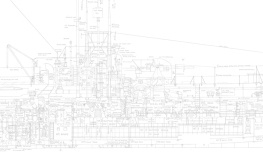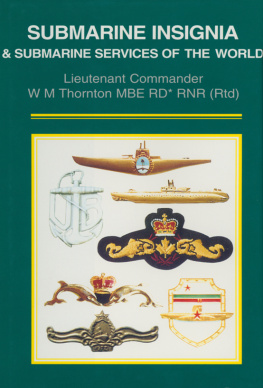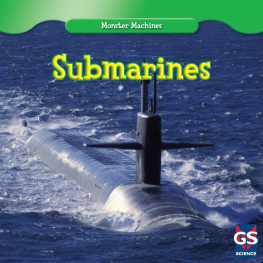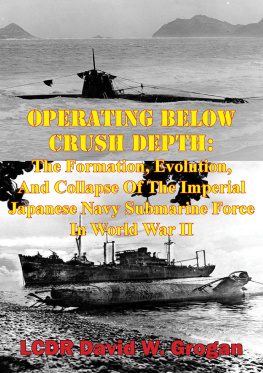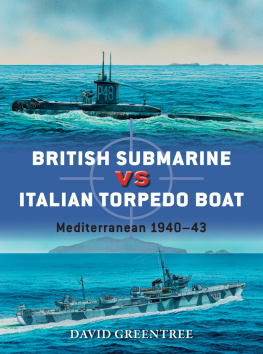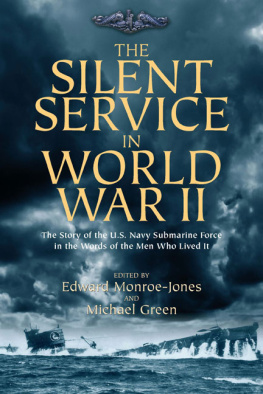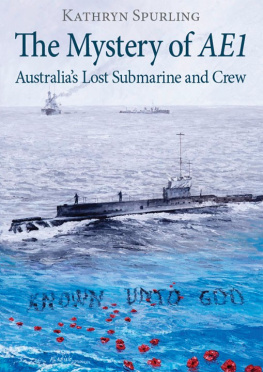Copyright Norman Friedman 2019
This edition first published in Great Britain in 2019 by
Seaforth Publishing,
An imprint of Pen & Sword Books Ltd,
47 Church Street,
Barnsley
South Yorkshire S70 2AS
www.seaforthpublishing.com
Email:
British Library Cataloguing in Publication Data
A catalogue record for this book is available from the British Library
978-15267-3816-5 (Hardback)
978-15267-3818-9 (Kindle)
978-15267-3817-2 (ePub)
eISBN 978-15267-3817-2
Mobi ISBN 978-15267-3818-9
All rights reserved. No part of this publication may be reproduced or transmitted in any form or by any means, electronic or mechanical, including photocopying, recording, or any information storage and retrieval system, without prior permission in writing of both the copyright owner and the above publisher.
The right of Norman Friedman to be identified as the author of this work has been asserted by him in accordance with the Copyright, Designs and Patents Act 1988.
Pen & Sword Books Limited incorporates the imprints of Atlas, Archaeology, Aviation, Discovery, Family History, Fiction, History, Maritime, Military, Military Classics, Politics, Select, Transport, True Crime, Air World, Frontline Publishing, Leo Cooper, Remember When, Seaforth Publishing, The Praetorian Press, Wharncliffe Local History, Wharncliffe Transport, Wharncliffe True Crime and White Owl.
ABBREVIATIONS
ADT = Assistant Director of Torpedoes
AEL = Admiralty Engineering Laboratory
AIO = Action Information Organisation
ANCS = Assistant Chief of the Naval Staff
A(S) = Admiral (Submarines)
ASD = Anti-Submarine Division
ASW = anti-submarine warfare
BHP = brake horsepower
BIR = Board of Invention and Research
CIC = Combat Information Center
CID = Committee of Imperial Defence
CNS = Chief of the Naval Staff
COPP = Combined Operations Pilotage Party
EinC = Engineer-in-Chief
DA = director (or deflection) angle
DASD = Director, ASW Division
DCNS = Deputy Chief of the Naval Staff
DCT = director control tower
DDOD = Deputy Director of Operations Division
DEE = Director of Electrical Engineering
D/F = direction-finding
DGD = Director of Gunnery Division
DNA&T = Director of Naval Artillery and Torpedoes
DNC = Director of Naval Construction
DNE = Director, Naval Equipment
DNI = Director of Naval Intelligence
DNO = Director of Naval Ordnance
DOD = Director of Operations Division
D of D = Director of Dockyards
DTD = Director of Tactical Division
DSD = Director Signals Department
DSR = Director, Scientific Research
DTASW = Director of Torpedo, Anti-Submarine and Mine Warfare
DTM = Director of Torpedoes and Mining
DTSD = Division of Training and Staff Duties
FOSM = Flag Officer Submarines
HA = high angle (gun)
HE = hydrophone effect
H/F = high frequency
HP = high pressure/horsepower
HTP = high-test (hydrogen) peroxide
ICS = Inspecting Captain of Submarines
KBB = Kelvin, Bottomley and Baird
LA = low angle (gun)
LP = low pressure
M/F = medium frequency
NHHC = Naval History and Heritage Command (US)
NID = Naval Intelligence Department
PDH = Portable Directional Hydrophone
RA(S) = Rear Admiral (Submarines)
RCNC = Royal Corps of Naval Constructors
RDH = revolving directional hydrophone
RPM = revolutions per minute
SLC = Siluro lenta corsa (low-speed torpedo)
S/T = sound telegraphs
STD = Submarine Torpedo Director
TBS = Talk Between Ships (US)
TDC = Torpedo Data Computer (US)
VA(S) = Vice Admiral (Submarines)
WRT = water round torpedoes
W/T = wireless telegraphy
CHAPTER 1
THE ROYAL NAVY AND THE SUBMARINE, 19011945
The Royal Navy did not invent the submarine, but by 1914 it was the worlds leading submarine operator. It was extremely innovative. For example, it originated the specialised anti-submarine submarine which became so important after the Second World War. Its First World War fleet submarines can be seen as forebears of modern fast nuclear submarines intended for direct support of battle groups. By 1914 the Royal Navy considered submarines integral to its strategy. Like the rest of the Royal Navys ships, submarines were much affected by the strategic shifts of the interwar years, from an emphasis on European waters to the Far East and then back to European waters. These shifts are visible in the design of British submarines. British submarine design was also much affected by the interwar attempts at arms control, particularly the 1930 London Naval Treaty. This book is limited to the period through 1945, because afterwards submarine roles and technology changed drastically. The period after 1945 will be covered in a separate volume.
The Royal Navy did not buy submarines until 1901 not because of some innate conservatism but because up to that point submarines did not affect its strategy. It kept close watch on foreign submarine developments, the question always being when (and if) submarines matured to the point that they might affect British naval operations. For example, the Royal Navy acquired plans of the Confederate submarine H.L. Huntley , which had successfully attacked the Union sloop Housatonic off Charleston in 1864. In the 1880s British officers witnessed the trials of the Garrett-Nordenfelt submarine off Stockholm.

